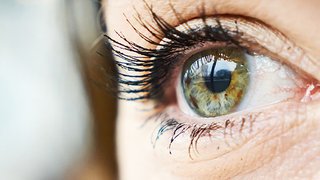
We all take great pride in our personal appearance – it’s human nature. We choose our clothes and style our hair to fit our personalities and accentuate our favorite features.
But breast cancer can drastically change a woman’s appearance. Understandably, having part or all of a breast removed can have a major effect on their body image and self-esteem. That’s why some women choose breast reconstruction to make their breasts look more like they did before cancer – or even better, in many instances.
I always mention to patients that reconstruction is a process and an ongoing journey, both physically and artistically. My end goal always is to have an excellent result and a happy patient, even though we cannot restore all that is missing following a mastectomy and treatment of breast cancer.
Our Department of Plastic Surgery specializes in breast reconstruction for patients in the Dallas-Fort Worth area and beyond. I’ve performed more than 3,000 of these procedures in the past eight years. None of the surgeries was the same and, in each one, the patient was highly involved in the process. We work and operate as a cohesive breast reconstruction team, with several breast microsurgeons involved in the longer procedures.
When you are treated for breast cancer, some breast tissue might need to be removed by your surgical oncologist. This tissue can then be replaced, or reconstructed, by a plastic surgeon. Various options are available, depending on your age and medical condition.
It’s important to understand all your options and to have your questions answered before you make your decision. Here are some of the questions I hear most frequently from my patients:
Should I have breast reconstruction right away?
It’s your decision whether to have breast reconstruction immediately after cancer surgery, to wait for a period of time, or to not have reconstruction at all. You may not be prepared for another surgical procedure right after surgery for cancer. Treating your cancer comes first and should be your top priority.
If patients are undecided which type of reconstruction to proceed with at the time of their cancer diagnosis or if there is radiation involved, the least thing I usually do is place a temporary expandable device to prepare for future reconstruction. Using such a device has many advantages even for patients who choose a reconstructive procedure that uses their own tissue.
An option that doesn’t involve reconstruction is an external prosthesis. A prosthesis – a breast form you wear inside a bra – can look great, and it requires no surgery. Some patients are happy with this option.
Before we ever go ahead with reconstructive surgery, I make sure my patients are physically and emotionally prepared to make important decisions about reconstruction.
What do I need to know about breast reconstruction?
One of the most common misconceptions about breast reconstruction is that it is completed in one procedure. It can be in rare circumstances, but ultimately it’s a process of several procedures, and not necessarily simple ones. A great deal of artistic measure is tied to a successful outcome in breast reconstruction. Procedures that involve using a patient’s own tissue can take up to six to eight hours per operation, depending on the patient’s anatomy, but many can be performed in a few hours or less. Completion of the process, though, may take up to one or two years, and in some cases longer, depending on how the patient’s cancer was treated.
Anatomical and biological issues also dictate the type of breast reconstruction that can be performed. For example, heavy smokers often have complications because their skin heals more slowly. Heart and lung problems also may play a role in eligibility. Additionally, severely obese patients and patients with clotting disorders usually are not good candidates for breast reconstruction. Every patient’s anatomy is different, and every procedure has to be individualized.
Another misconception is that older patients cannot have breast reconstruction surgery. Age is not a factor. More important is the patient’s overall health and physiology, and whether she can tolerate the stages of surgery.
Should I get implants or use body tissue?
Most implants used in breast reconstruction are made of silicone. The FDA has approved many different implant shapes and sizes, and the results have the potential to look wonderful.
Implants are used in about two-thirds of the 95,000 breast reconstruction operations performed each year in the United States, according to the American Society of Plastic Surgeons. Implants also can use saline; however, silicone is softer than saline and has a better shape.
About one-third or fewer breast reconstruction surgeries use the patient’s own tissue. That tissue can come from the abdomen, back, thighs, or buttocks. Essentially, we transplant tissue and link it to blood vessels in the chest. This advanced surgery calls for an experienced and multidisciplinary microsurgical breast reconstruction team and can involve using a microscope and, often, sutures as thin as a hair.
Think of breast reconstruction as an art form. The ultimate goal is to create the look you want, whether it’s an implant or using your own tissue. And it’s a process toward an ultimate artistic and balanced result.
Are there drawbacks to breast implants?
Most patients who opt for implants are happy with their results. But it’s important to note that artificial objects inserted in the body will not last forever.
Implants can change shape, leak, rupture, or scar, and they don’t age normally. Sometimes, they stretch the skin and feel heavy.
Though an implant doesn’t really age, the tissues around it will. Some women – often five to 10 years after breast reconstruction – opt for additional surgery. Some patients, later in life, choose to have their implants removed.
Is breast reconstruction available for late-stage cancer?
Almost all cancer patients can be candidates for breast reconstruction. I have operated on several high-risk patients during my career.
Patients who are on medications to suppress cancer can have the surgery performed. Even stage 4 patients can have breast reconstruction as long as they are under medical supervision. If a patient can physically and emotionally handle the surgery, we can go ahead with it.
Ultimately, it’s your decision whether to have breast reconstruction, use a prosthesis, or do neither. Again, your cancer treatment should be your top priority. You can make decisions about reconstructive surgery when you’re ready.
When you’re ready, visit our breast reconstruction page for deeper information and to learn about the three types of breast reconstruction surgery.











